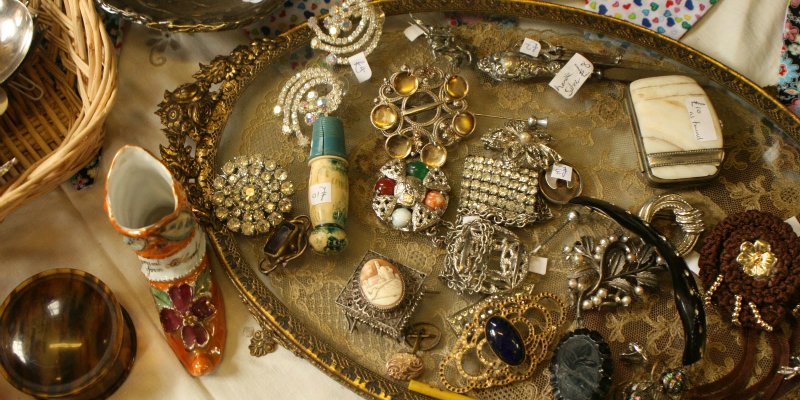Jewelry has been a symbol of wealth, status, and beauty since ancient times. From simple shells and beads to elaborate gold and gemstone designs, jewelry has played an important role in human culture for thousands of years. Throughout history, different civilizations have developed their own unique styles and techniques for creating jewelry, resulting in a diverse range of designs that continue to inspire modern trends.
In this article, we will explore the rich history of jewelry from its earliest origins to present-day fashion. We will examine the materials used, the symbolism behind different designs of weddings or engagement rings and the ways in which jewelry has evolved over time. Whether you are a lover of vintage or contemporary pieces, understanding the history behind jewelry can deepen your appreciation for this timeless art form.
The allure and significance of jewelry
Jewelry has been a symbol of social status, wealth, and beauty for thousands of years. From the ancient Egyptians to modern fashion icons, jewelry has played an important role in human culture. The use of jewelry as adornment dates back to prehistoric times when people wore shells, animal teeth, and bones on their bodies.
As civilizations progressed, so did the artistry and techniques used to create jewelry. Ancient Egyptian jewelry was crafted with precious metals like gold and adorned with colorful stones such as lapis lazuli and turquoise. In ancient Rome, jewelry was worn not only for aesthetic purposes but also as a way to display one’s political or military rank.
Ancient Times: Jewelry as a status symbol
In ancient times, jewelry was not just a fashion accessory but also a symbol of one’s status. The more elaborate and expensive the jewelry, the higher the status of its wearer. In many cultures, jewelry was also used to indicate wealth and power. For example, in ancient Egypt, pharaohs wore intricate gold necklaces and bracelets encrusted with precious gems as a sign of their divinity and authority.
Similarly, in ancient Rome, only the wealthy elite could afford to adorn themselves with gold rings or earrings studded with diamonds or rubies. Jewelry was not just limited to women either; men also wore ornate brooches and pendants as symbols of their social standing.
Medieval Era: Religious symbolism in jewelry
During the medieval era, jewelry was not only a fashion statement but also a symbol of religious belief and devotion. Crosses, crucifixes, and other Christian symbols were commonly worn by both men and women as pendants or brooches. These pieces often featured intricate designs with precious stones such as emeralds, sapphires, and rubies.
In addition to Christian symbolism, there were also pieces that depicted pagan beliefs such as the Tree of Life or the Green Man. These pieces were often crafted from materials such as wood or bone rather than precious metals and stones.
Renaissance Period: Intricate designs and craftsmanship
The Renaissance period was a time of great creativity and innovation in the world of jewelry. Intricate designs and craftsmanship were highly valued during this time, with skilled artisans creating elaborate pieces using precious metals, pearls, gemstones, and enamel. One of the most well-known styles from this era is the Italian Renaissance jewelry style which featured intricate filigree work, engraved details, and colorful gemstones.
In addition to its ornamental value, Renaissance jewelry also held significant symbolic meaning. Many pieces were created as gifts or tokens of love or friendship between individuals or families. Religious themes were also common in Renaissance jewelry design with many pieces featuring crosses or other Christian symbols.
Victorian Era: Sentimentality and mourning jewelry
During the Victorian era, sentimentality and mourning jewelry became incredibly popular. These pieces of jewelry were typically worn by women who were mourning the loss of a loved one and served as a way to keep their memory close. The jewelry was often made with black materials such as jet, onyx, or dark enamels and featured symbols such as weeping willows or urns.
Sentimental jewelry was also popular during this time period and was given as gifts between family members or romantic partners. These pieces often featured lockets that could hold a small picture or lock of hair from a loved one. Other excellent custom jewelry pieces included rings with hidden messages, bracelets with engraved names or dates, and brooches featuring flowers that held symbolic meaning.
Conclusion:
In conclusion, the history of jewelry has been a fascinating journey through time and cultures. From simple beads to intricate gold and diamond designs, jewelry has evolved over thousands of years to become not only a symbol of wealth and status but also an expression of personal style. Despite the changes in fashion trends and societal values, jewelry remains an enduring form of adornment that continues to captivate people around the world. As we look towards the future, it is clear that jewelry will continue to evolve with new materials and technologies, but its timeless appeal will always remain. So whether you prefer minimalist or extravagant designs, let your jewelry reflect who you are and what you value most.

